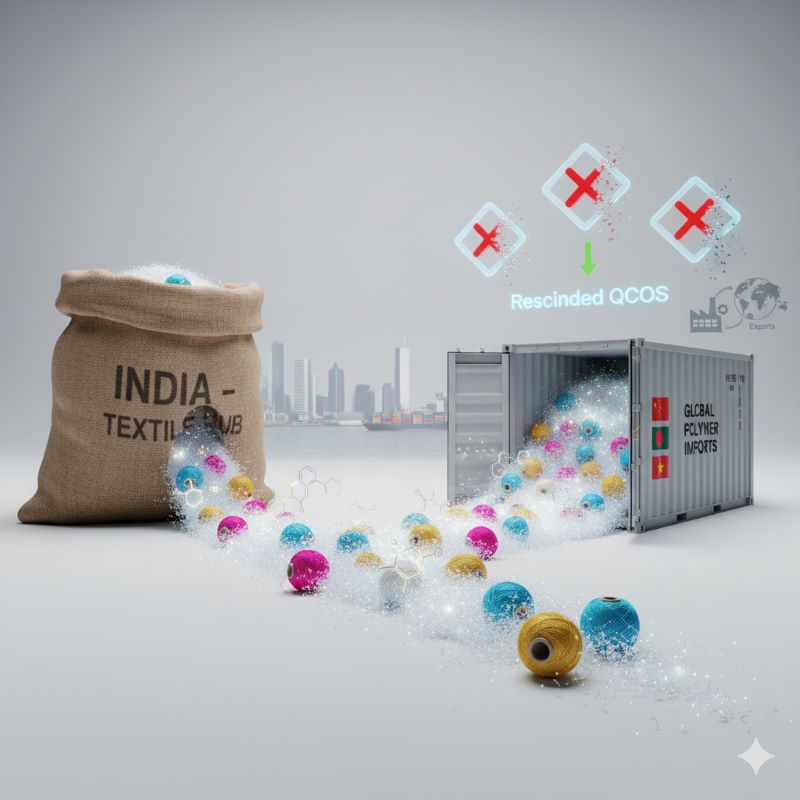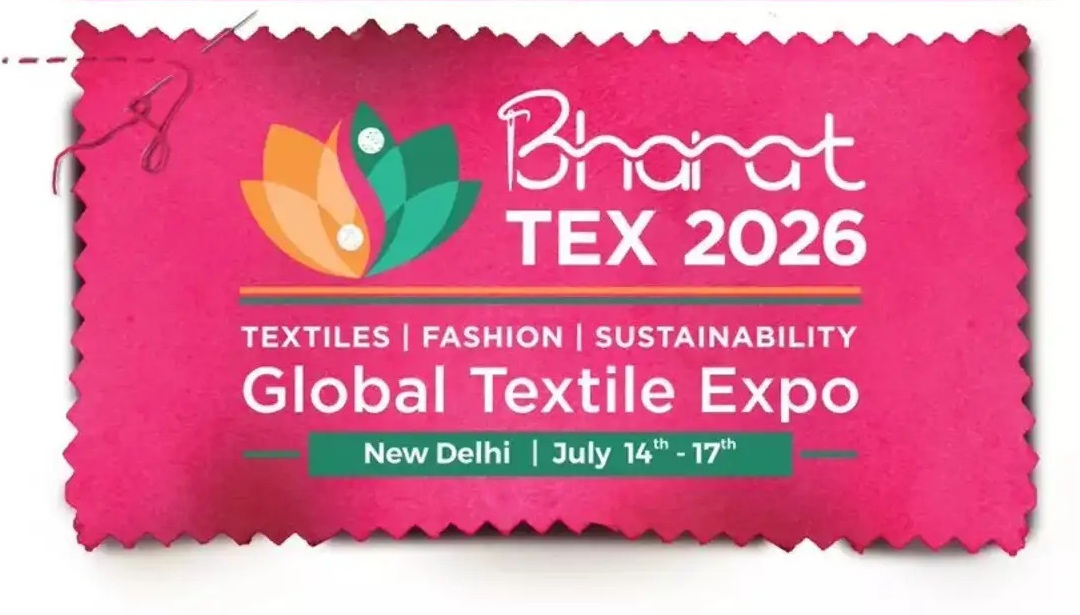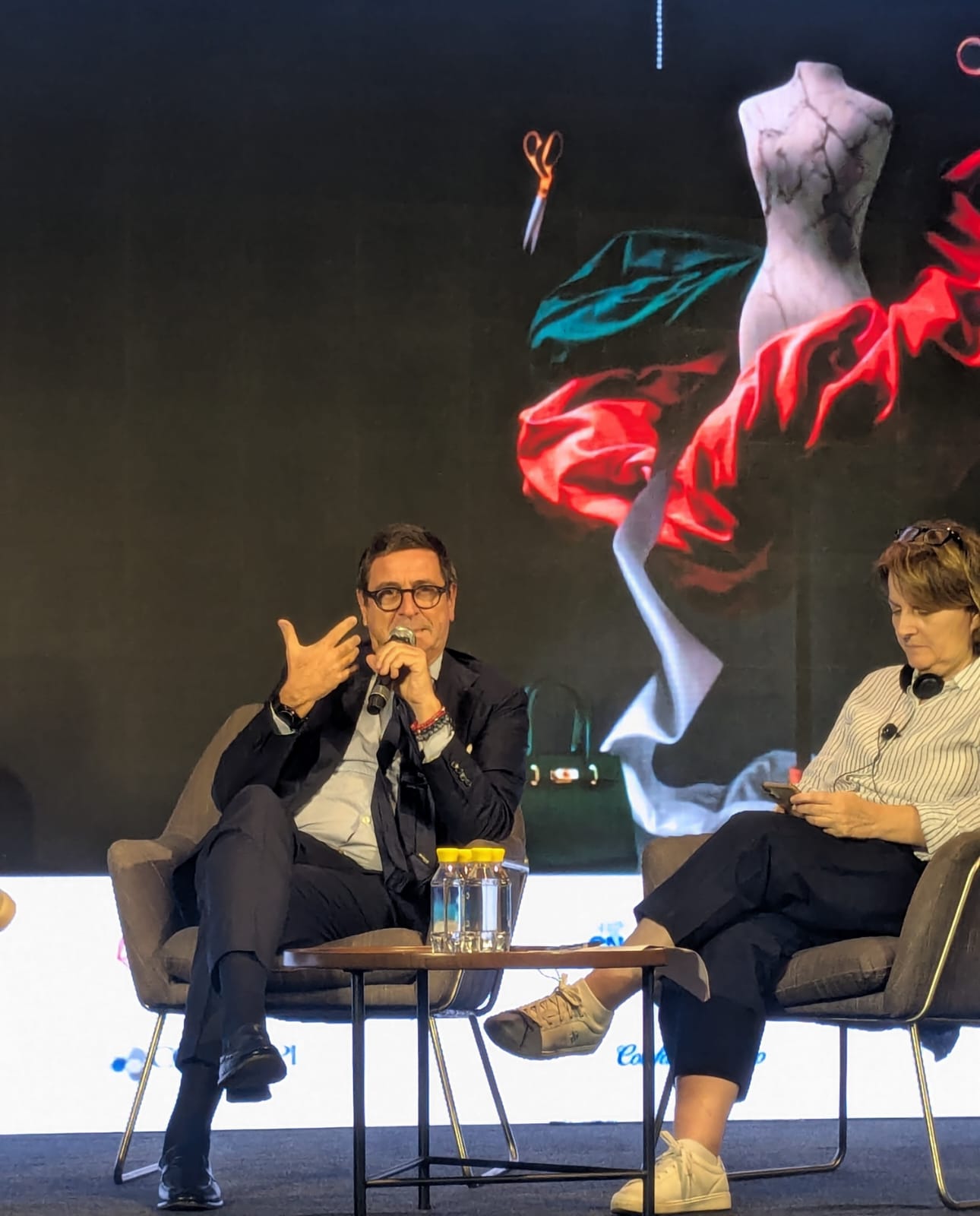FW
The upcoming Trans-Pacific Partnership is set to bring huge changes in Vietnam’s bustling garment industry and businesses and investors are preparing for this. A great deal of foreign textile and garment manufacturers are keen to cash in on the tax benefits of the upcoming Trans-Pacific Partnership (TPP) with Vietnam. The agreement promises radical tax cuts for Vietnam’s garment exports. This can be achieved only if they use fabric made locally or in other TPP countries, which excludes China. The agreement is being negotiated by 12 countries, including the US. However, for the emerging country’s thousands of small and medium-sized garment makers, the benefits are less certain.
The Ho Guom Garment factory in northern Vietnam produces 25 million garments every year, which bear the label ‘Made in Vietnam’. However, more than half the material used to make them comes from China. Sourcing locally is tough and expensive. At times it is extremely difficult to find zippers, or some special raw materials. Therefore, they have to contact Ho Chi Minh City, Danang, even China or Taiwan to get samples, so it takes a very long time.
Vietnam’s own textile mills today produce only a fifth of the country’s needs. Thus, there’s completion within the country’s clothing makers to find the right suppliers.
Cambodia's garment unions finally agreed to demand a monthly industry minimum wage of $168 after weeks of haggling. However, they now find that employers are unwilling to consider a rise beyond the rate of inflation. Pro-government and independent unions debated between demanding $158 or $178 a month, wherein one league of independent unions even offered a target of $207 based on a survey of garment workers’ spending habits. This is in light of the ongoing tripartite minimum-wage talks, which are slated to culminate in October. However, recently, 14 unions settled on the $168 figure after more than an hour of internal discussion.
Employers, however, have not shown any sign of accepting these demands and so far have only agreed to increase salaries by the rate of inflation. This is based on a current rate of 3.5 per cent and the current minimum wage of $128, amounts to slightly less than $4.50 a month.Garment Manufacturers Association’s spokesperson in Cambodia, Ke Loo said that the union and government sides had so far, failed to prove to employers that there was a solid economic rationale for a rise in the minimum wage. He added that GMAC’s criteria, such as such as productivity, showed that the minimum wage should actually be decreased, and the unions’ $168 demand was ‘not workable’.
The $168 figure, though, according to Pav Sina, President of the Collective Union of Movement of Workers (CUMW), was based in part on external economic factors. He added that they were trying to considers issues of the economy, living standards, productivity, spending and also inflation to show them to the employers.
Ralph Lauren Corporation has announced that Stefan Larsson, ex-global president at Old Navy will be stepping into the Chief Executive’s role at Ralph Lauren. His appointment will be effective from November, when he will also join the Ralph Lauren Corporation board. Larsson will report to Ralph Lauren, who has resigned from the CEO’s position but will continue to drive the company’s vision and strategy as Executive Chairman and Chief Creative Officer.
Under Larsson’s leadership, Old Navy enjoyed three consecutive years of profitable growth, adding $1 billion in sales. Previously, in 15 years at Swedish retailer Hennes & Mauritz (H&M), Larsson was part of the team that grew sales from $3 billion to $17 billion and expanded the company’s operations from 12 to 44 countries.
Commenting on the Larsson’s appointment, Ralph Lauren said, “My job is to think always about the future of our company and how to move it forward. Stefan Larsson is exceptionally talented, and he will bring our company a fresh and exciting global perspective. Stefan and I have a strong personal bond and share a vision for the future of Ralph Lauren. Now, all the pieces are in place to position our business for continued growth. We have been a leader in our industry for nearly 50 years, and this is just the beginning.”
This announcement follows a number of steps the company has taken in recent years to continue to strengthen its industry leadership, reach new consumers and drive the continued growth of Ralph Lauren Corporation, which last year generated $7.5 billion in sales. In just the past two years, the company continued to significantly expand its luxury business and added three new brands to its portfolio – Polo for Women, Polo Sport, and Denim and Supply.
The company also announced that Jackwyn Nemerov, President and Chief Operating Officer, will retire in November, at which time she will become an advisor to the company. Chris Peterson, President of Global Brands, and Valerie Hermann, President of Luxury Collections, will continue in their current roles reporting to Stefan Larsson.
The company’s brand names, which include Polo Ralph Lauren, Ralph Lauren Purple Label, Ralph Lauren Collection, Black Label, Lauren by Ralph Lauren, Double RL, RLX, Ralph Lauren Childrenswear, Denim & Supply Ralph Lauren, American Living, Chaps and Club Monaco, constitute one of the world’s most widely recognized families of consumer brands.
www.ralphlauren.com
Hennes & Mauritz (H&M) has welcomed the new co-operation between the Swedish and Bangladeshi governments and the UN body ILO. It aims at strengthening the relation with the labour market and promoting social dialogue in the Bangladeshi textile industry. The collaboration agreement was signed during the UN General Assembly meeting in New York.
H&M says Bangladesh is an important production market for the company and it has been working to promote a stable labour market in the country for many years. “Thanks to our long experience from the Bangladeshi textile industry as well as our knowledge within the social dialogue area, we are able to contribute to this new collaboration hands-on,” the company said.
For example, H&M is running a social dialogue program in Bangladesh aiming at democratically elected employee committees at the supplier factories, which is an important part of our fair living wage strategy. It aims to cover all factories that produce for H&M under the project during 2018.
“Furthermore, we collaborate with the ILO and SIDA within skill development in Bangladesh. The project was initiated in 2013, and is also closely linked to our work within the wage area. This work aims at creating a link between actual skills and the wage level as well as improved productivity and occupational safety in the textile industry,” the company added.
www.hm.com
China is planning to boost the textile industry in the Xinjiang region. The idea is to transform Xinjiang into a major textile base in the next five years, with investment, financial aid and subsidies. Xinjiang is a major cotton base with low labor costs. Chinese apparel firms from outside Xinjiang have invested more than 30 billion yuan to establish plants and cooperate with local clothes makers.
Nurturing local companies and attracting capital from further afield, Xinjiang expects output of textile and garment sectors to reach 212.5 billion yuan by 2023, when it will be able to provide jobs for one million people. The northwestern region will soon have fresh opportunities with a bridge linking China to Russia and Central Asia, as the government coordinates a campaign to revive the ancient trade routes known as the Silk Road, to strengthen economic ties with neighboring countries.
Xinjiang borders eight countries, making it important to the Silk Road economic belt. The government has already started improving infrastructure and establishing special trade areas. A special zone has been constructed in the capital of Xinjiang to connect local producers with international markets and help internationalise Xinjiang’s enterprises. The zone, covering 2.4 square kilometers, is scheduled for operation by July 2016.
The US textile and apparel industry can hope for a good 2015. Overall mill shipments are expected to be up by about three to four per cent as per forecast. The growth would be led by basic mill products like fibers and fabrics. The more highly fabricated items that include carpets, household furnishings and industrial products also should begin to show growth at a much faster pace in 2015.
Segments like filtration, protective apparel, roofing and geo textiles and non-woven fabrics are also expected to register strong growth in 2015. The segment of active wear is also showing growth as more and more people are wearing active wear for activities other than exercising and this has resulted in sales’ growing at double the rate noted for non-active wear.
Predictions for the denim market for the rest of 2015 are also significantly better. Variants in this segment like 100 per cent cotton denim are gaining popularity. The market for traditional denim is also expected to do well.
On the whole the US clothing and apparel segment is slated to rise another five per cent or so over the rest of 2015. With a balance between shipments and demand and supply, average prices in the overall textile industry are also expected to be stable throughout the year.
Ghana's once vibrant textile industry is fast becoming a pale shadow of itself. Influx of pirated textiles has affected profitability of local manufacturers. Cheap copies are being smuggled in from abroad, especially from China. Fakes now make up about 60 per cent of all textiles sold in Ghana. And counterfeits can sell at half the price of an authentic product.
The textile industry in the 1980s had over 20 companies employing over 25,000 people, but as of 2015 only four companies are battling for survival. Collectively they employ about 1,700 workers. And even in these companies workers are not assured job security. Ghana was a prime textile producer in Africa, feeding a lot of markets. There was a whole value chain around it.
Textile manufacturing in Ghana is an industry consisting of ginneries and textile mills producing batik, wax cloth, fancy printed cloth and kente cloth. The textile industry includes vertically integrated mills, horizontal weaving factories and the traditional textile manufacturing firms involved in spinning, hand-weaving and fabric processing.
Wax-printed fabric, a source of national pride that has come to represent African fashion worldwide, plays a vital role in weddings, funerals, and traditional events throughout Ghana.
During the June 2015 quarter, India's total apparel exports to the US in value terms increased by 10.7 per cent to $972.8 million. The same trend continued in July 2015. Data released by the US Office of Textiles & Apparels (OTEXA) shows, India’s apparel export value to the US rose by 7.3 per cent year-on-year to $324.8 million in July 2015. The country’s market share in US apparel imports improved by 10 basis points to 3.8 per cent. With this, India replaced Mexico as the fifth largest apparel exporter to the US.
Growth in exports was driven by an increase in both, volumes and realisations. During the month, the country’s export volumes rose by 3.4 per cent and realisation grew by 3.8 per cent. Among the top four apparel exporters to the US, China saw an increase of 4.9 per cent year-on-year touching $3.4 billion in July 2015. Vietnam’s exports surged 12.6 per cent to $1 billion and Bangladesh’s exports increased by 3.7 per cent to $508 million, while that of Indonesia declined by 1.5 per cent to $459.9 million.
During April-July 2015, India’s total apparel exports to the US grew by 9.8 per cent to $1.3 billion. Shipments from the country increased 6.4 per cent. Realisation rose by 3.3 per cent and India’s market share in US apparel imports expanded by 30 basis points to 4.7 per cent. Cumulative apparel exports of China to the US grew by a mere 0.7 per cent to $9.5 billion during the four months ended July 2015. Apparel exports of Bangladesh and Vietnam increased by 10.3 per cent and 17 per cent to $1.8 billion and $3.5 billion, respectively. Indonesia’s exports rose by 4.1 per cent to $1.7 billion during the period.
Otexa.ita.doc.gov
Factory owners and workers in Cambodia's garment and footwear industry can’t agree on the minimum wage level. Owners say any rise in wages would devastate factories already struggling to make a profit after last increase. There is also a debate among labor unions about how high they want the minimum wage to rise. They have yet to arrive at an agreement.
The footwear and garment sector employs about seven lakh people and accounts for the lion’s share of the country’s exports. In November 2014 the minimum wage for garment and footwear workers was hiked by 28 per cent but faced strong resistance from employers. The industry meanwhile is on a downward trend. It shrank to four per cent in 2014 and has to be compared with the 35 per cent growth of only a few years ago. The 500 or so factories in Cambodia have reported reduced orders. Employers say this is because of the wage protests and strikes, which they claim has damaged buyer confidence. Cambodia’s minimum wage is now double that of competitor Bangladesh. So the sector’s ability to compete regionally is under strain.
Rapid wage hikes, frequent strikes, political instability, and negative media coverage have damaged the competitiveness of Cambodian factories.


The company outlined the challenges and opportunities Chinese apparel manufacturers are facing in the context of China’s Ministry of Industry and Information Technology’s 10-year strategic plan: ‘Made in China 2025’. This plan aims to help the Chinese economy develop its capacity for value-added manufacturing and smart industrial production.
Lectra perspective on ‘Made in China 2025’
Daniel Harari, Lectra CEO, and Andreas Kim, Managing Director of Lectra Greater China, shared their perspectives on what ‘Made in China 2025’ means for this rapidly evolving market and how technology-driven smart production can help Chinese companies speed up product development and add value to their design and manufacturing activities. This would help differentiate them from competitors in emerging markets by providing their customers with better service, more innovative style options and a superior-quality product.
“China’s apparel manufacturing industry has driven the country’s economy for the past three decades but the industry is now dealing with an economic slowdown, higher wages, bigger environmental awareness and more limited resources. Contenders in Cambodia, Vietnam and Bangladesh can compete on cost, while advanced economies such as the US, Germany and Japan are pulling ahead in terms of technology. If Chinese brands want to stay competitive, they need to distinguish themselves by focusing on enhanced value and services, brand quality and creativity,” said Daniel Harari.
Key focus areas for Chinese manufacturers
Lectra identified five key areas where Chinese apparel manufacturers could benefit from adopting best-in-class practices to meet Made in China 2025’s ambitious goals: innovation, differentiation, industrial excellence, collaboration and transformation. The company also presented ways in which technology and lean methodologies—key components of Lectra’s offer—can help with reaching these objectives.
Daniel Harari highlighted how seamless data sharing from design to production facilitates interactive, real-time collaboration. And how using Lectra smart technology with machine-embedded intelligence across the production chain can optimize efficiency, reduce waste and improve overall product quality. He also emphasized the crucial role of effective change management in ensuring a successful transition to smart production.
“There are still variations in quality standards and efficiency among Chinese manufacturers, but the ‘Made in China 2025’ plan has put strong guidelines in place to solve these issues. China is ready to move on from its role as ‘the world’s factory’ and become an innovative global leader in apparel manufacturing. By investing in innovation and smart technology, Chinese apparel manufacturers can shift their focus to operational efficiency and product quality, reinventing their offer and ultimately turning ‘Made in China’ into a real mark of excellence,” concluded Andreas Kim.












